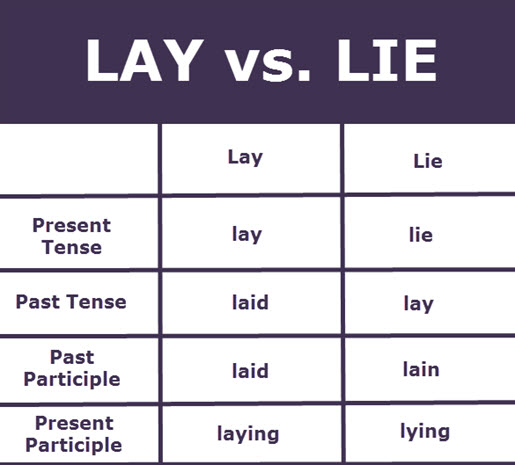Lay and lie are two different verbs that mean different things. Lie is a complete verb. It is an action taken by someone or something. Lay is transitive verb, which means it requires at least one object. It is something that happens to an object, such as books, eggs, a body or a box of doughnuts.
Focus on the fact that the lay verb requires an object when deciding which verb to use. Humans and chickens can both lie in the sun but only chickens can lay eggs in the sun.
Lie Verb Forms: Lie (present) Lying (present participle) Lay (past) Lain (past participle)
Lay Verb Forms: Lay (present) Laying (present participle) Laid (past) Laid (past participle)
Lay vs. Lie Chart
Here's a lay vs. lie chart:

Here are some examples:
Present Tense
- I will lie in the sun.
- I will lay the book on the counter.
- I am lying in the sun getting a sun burn.
- I am laying the book on the counter.
Here the verbs get confusing because the past tense of lie is lay, which as you know has the same spelling and pronunciation as present tense of the other verb. Note also that the past tense of lay is laid not the sometimes incorrectly used layed.
- Yesterday, I lay there in the sun all day.
- Yesterday, I laid the book on the counter.
- I have lain here in the sun for days.
- I have laid the book on the counter.
Here's a helpful video about the topic from Schmoop with multiple examples. Watch it while you are lying on the couch.


